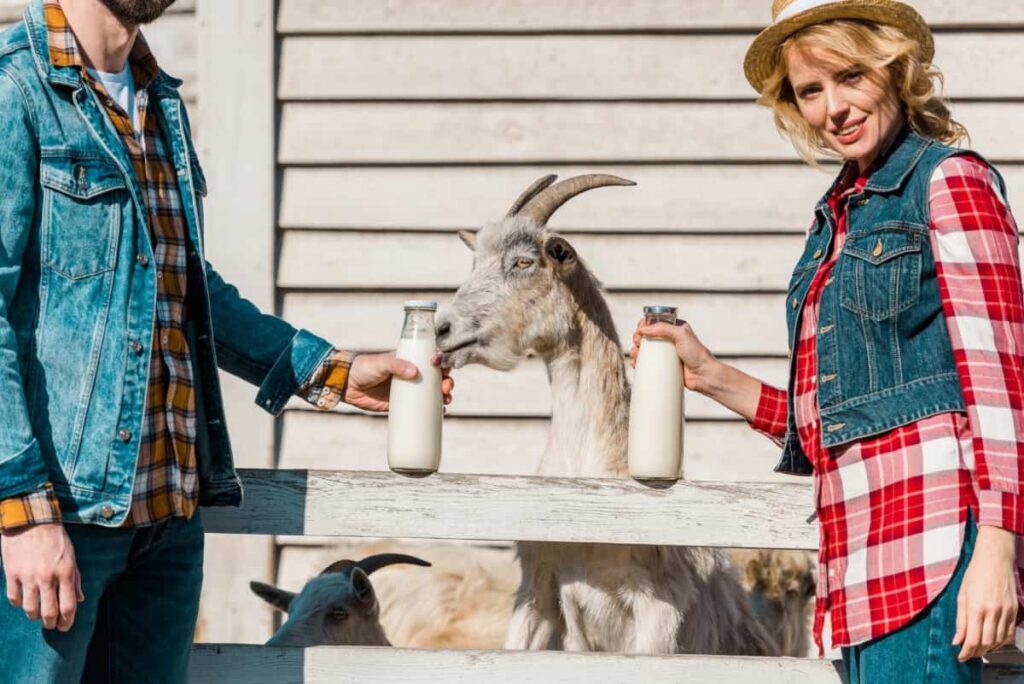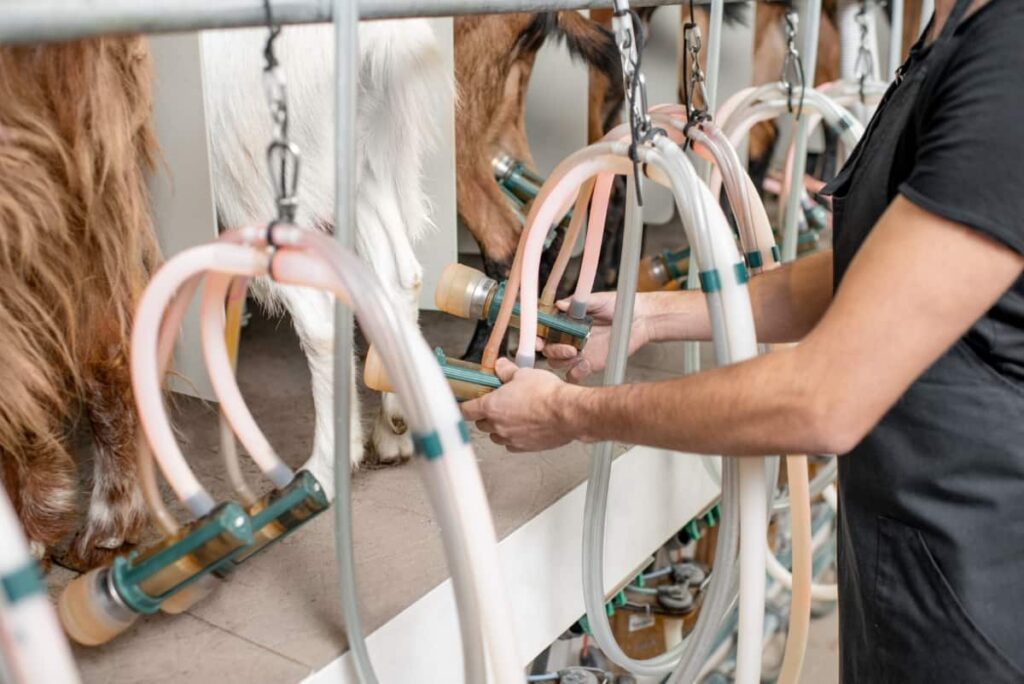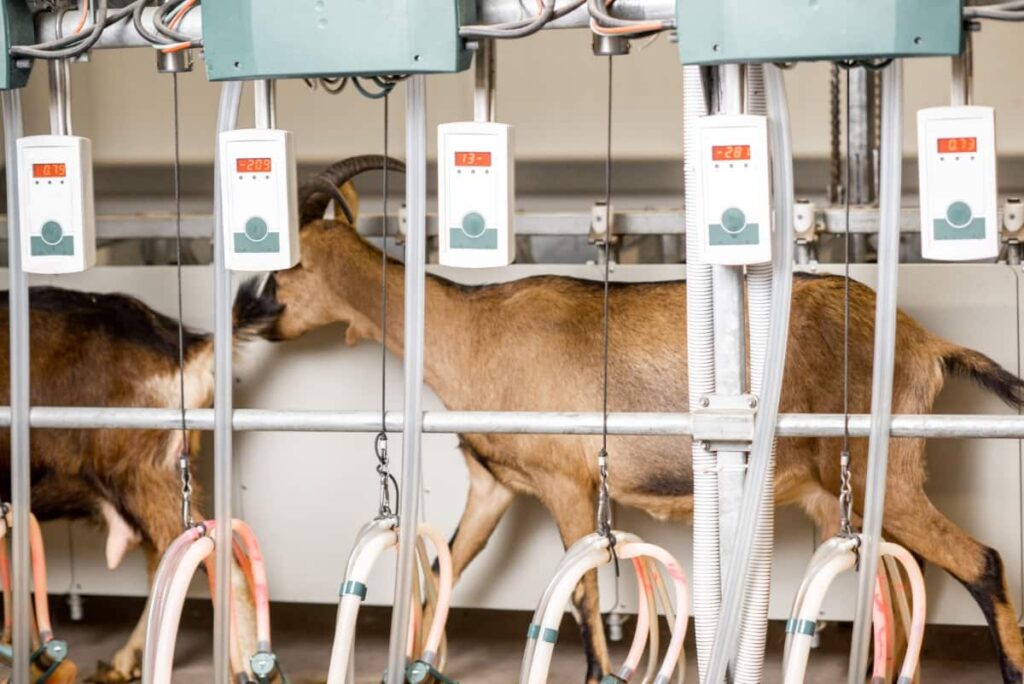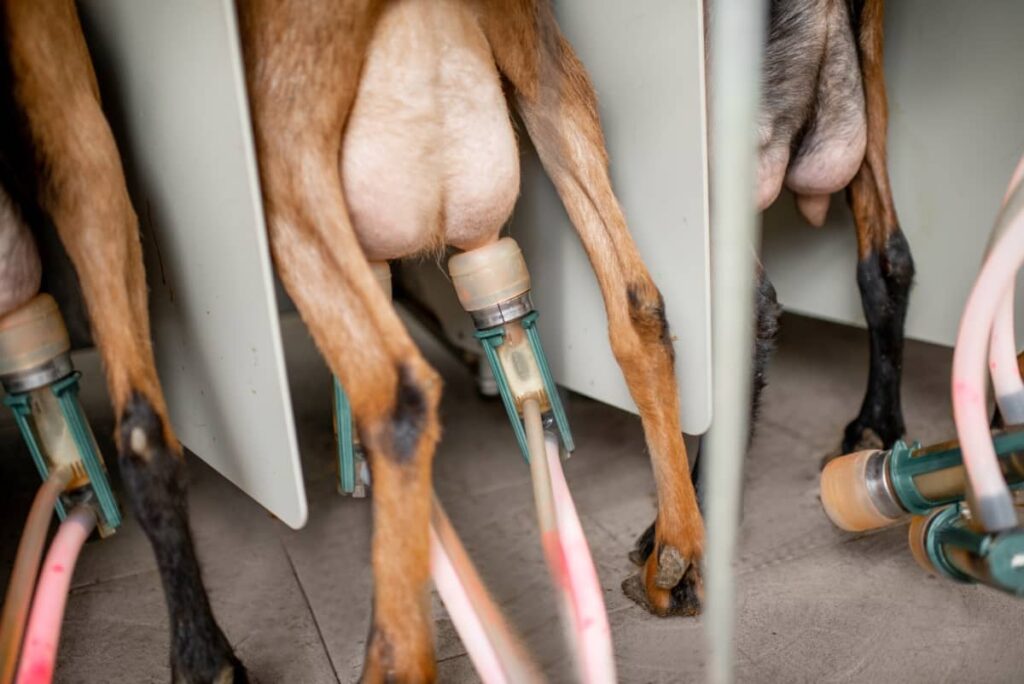Starting a dairy goat farm can be an incredibly rewarding venture, both personally and financially. Dairy goat farming in the USA provides a sustainable source of income for farmers across the country.

How to Start a Dairy Goat Farm in the United States
Step-By-Step Guide to Setting up Your First Dairy Goat Farm in the USA
Research and Planning: Begin by researching different aspects of dairy goat farming, such as breeds, housing requirements, feeding practices, and health care. Develop a business plan that outlines your goals, financial projections, and marketing strategies.
Secure Land: Identify suitable land in the USA for your goat farm. Consider factors like size, location (preferably rural), access to grazing pasture or hay supply, and zoning regulations specific to your area.
Choose the Right Breeds: Selecting the best dairy goat breeds for your farm is crucial. The popular dairy goat breeds in the US include Alpine goats, known for their milk production, and Nigerian Dwarf goats, prized for their high butterfat content.
Construct Suitable Housing: Build or modify existing structures based on recommended specifications for dairy goat housing. Ensure proper ventilation, adequate space per animal (at least 10 square feet), and separate areas for kidding and milking facilities.
Establish Feeding Program: Develop a sustainable feeding plan that includes quality hay/grass pasture supplemented with grains and minerals specific to goats’ nutritional needs.
Arrange Veterinary Care: Consult with a veterinarian experienced in working with goats to establish routine health checks, vaccination schedules, and deworming protocols.
Milking Process: Set up efficient milking equipment such as pipelines, bucket milkers, or robotic milkers, depending on herd size.
Marketing Strategies: Determine ways to market your products locally, such as selling at farmer’s markets, collaborating with local stores/restaurants, and utilizing social media platforms.
Understanding Zoning Laws for Dairy Goat Farming in Different States
Zoning regulations vary from state to state and even within local municipalities, so it’s essential to do your research and ensure compliance with all applicable rules and regulations. In some states, such as California, there may be specific zones designated for agricultural activities like dairy goat farming.
On the other hand, states like New York might have more stringent regulations regarding farm size and proximity to residential areas. This is done to mitigate any potential nuisances or conflicts that could arise from noise, odor, or traffic associated with large-scale farming practices. Some counties or municipalities may have additional restrictions on things like building structures or waste management systems.
Dairy Goat farming states in the USA
Dairy goat farming is a thriving industry in the United States, with several states emerging as key players in this field. California, Wisconsin, Pennsylvania, Iowa, and New York have established themselves as top dairy goat farming areas in the USA due to climate conditions, supportive infrastructure, and strong market demand.
In case you missed it: Goat Nutrition and Feeding Schedule: Instructions for Beginners

The Best Dairy Goat Breeds for Beginners in the United States
Selecting the best dairy goat breeds suited for your American climate is just the first step toward a successful dairy goat farming venture. Alpine, Nigerian Dwarf, Nubian, Saanen, and LaMancha are the best suitable for goat farming in the USA.
Cost Analysis: Budgeting for Your Dairy Goat Farm Startup
Setting up a dairy goat farm in the United States comes with its own set of expenses. Here is an estimated cost analysis for starting your dairy goat farm in the USA;
| Expense Category | Estimated Cost Range | Notes |
| Land (Purchase/Lease) Cost | $5,000 – $45,000 | Varies by location, size, and quality |
| Goat Purchase | $1,000 – $4,500 | Depends on breed and quantity |
| Housing and Fencing Cost | $2,000 – $9,500 | Includes cost of building shelter and fencing |
| Feeding and Nutrition | $1,500 – $2,500 annually | Includes hay, grains, supplements, and pasture maintenance |
| Veterinary Care and Breeding | $500 – $1,500 annually | Regular health checks, vaccinations, breeding costs |
| Labor Costs | $1,000 – $4,500 annually | Depends on the need for hired labor |
| Milking Equipment and Processing | $1,000 – $4,500 | Costs for milking machines and dairy processing equipment |
| Utilities and Maintenance | $1,000 – $3,500 annually | Essential utilities like water and electricity |
| Insurance Premium and Permit Cost | $500 – $2,500 annually | Liability insurance, regulatory compliance costs |
| Marketing and Sales | $500 – $2,000 annually | Branding, packaging, and distribution costs |
| Miscellaneous Expenses Fund | 5-10% of total budget | For unexpected expenses |
The dairy farm cost in the USA can vary depending on many factors such as land prices, breed selection, housing requirements, equipment needs, etc. It’s important to create a detailed budget based on your specific circumstances.
How to Develop a Sustainable Feeding Plan for Dairy Goats in the US
- Assess Nutritional Needs: Start by understanding the nutritional requirements of dairy goats at different stages of life – lactation, dry period, and growing kids. Consult with a veterinarian to find the appropriate amounts of protein, carbohydrates, vitamins, minerals, and roughage needed.
- Quality Forage: Forages like alfalfa hay and grasses should form the basis of your goats’ diet as they provide essential nutrients. Ensure access to clean water at all times.
- Pasture Rotation: Utilize rotational grazing systems where goats can graze on fresh pastures regularly while allowing previously grazed areas time to recover.
Navigating Health and Veterinary Care for Dairy Goats in the US
Regular health checks are crucial for maintaining a healthy herd. This includes vaccinations, deworming, and hoof trimming. Your veterinarian can help create a schedule for these routine procedures based on your specific goat breed and location. Consult with your vet regarding selection criteria for breeding animals and ensure proper management during mating and pregnancy. Remember that each state may have different regulations regarding veterinary care for livestock animals like dairy goats.
Marketing Strategies for Small-Scale Dairy Goat Farms in the US
The effective strategy is to build a strong brand identity that communicates your farm’s values and unique selling points. Consider developing a logo, website, and social media presence that showcases your commitment to sustainable farming practices and high-quality products. To successfully market dairy goat products in America, it’s important to understand your target audience and develop effective strategies that highlight the unique qualities of your offerings.
In addition to establishing a strong brand, it’s important to reach out to potential customers through various channels. Another key aspect of marketing for small-scale dairy goat farms is creating appealing packaging for your products.
Dairy Goat Farming: Compliance With U.S. Health and Safety Regulations
These health regulations aim to maintain high standards of hygiene, prevent disease outbreaks, and ensure safe dairy products for consumers. The important aspect of compliance is proper sanitation practices. Dairy goat farmers must adhere to strict cleaning protocols for equipment, milking areas, and storage facilities.
In case you missed it: 15 Best Pet Goat Breeds: The Friendliest Goat Breeds Perfect for Pets and Farms

Another key regulation is regular veterinary care. Furthermore, food safety measures are crucial in dairy goat farming operations. Proper waste management is also essential to comply with environmental regulations. Labeling requirements play a significant role in ensuring consumer transparency by providing accurate information about dairy products’ origins and processing methods.
Innovative Dairy Goat Housing and Shelter Ideas in the United States
The popular idea is the use of modular barns or portable shelters. These structures allow farmers to move their goats to different grazing areas easily while still providing a safe and secure environment. In terms of ventilation, some farmers are now using advanced technology, such as solar-powered fans or automated ventilation systems that regulate airflow based on temperature sensors. Innovative goat barn designs in the USA have been gaining popularity among farmers, as they offer numerous benefits in terms of efficiency and animal welfare.
The Role of Technology in Modern Dairy Goat Farming in America
The main area where technology has made a significant impact is in automated milking systems. These systems not only reduce labor costs but also ensure consistent milking practices, leading to higher milk quality. Another aspect is the monitoring of overall herd health. Furthermore, digital record-keeping systems allow farmers to maintain comprehensive records of each goat’s breeding history, vaccination schedules, medical treatments, and milk production data.
Frequently Asked Questions (FAQ) on Start a Dairy Goat Farm in the United States
Are There Any Health Considerations when Raising Dairy Goats?
Regular veterinary care, like vaccinations and deworming, is essential for maintaining healthy animals.
Do I Need Any Special Permits or Licenses for Raising Dairy Goats?
Yes, make sure to check with your local authorities regarding zoning laws and any required permits for keeping livestock.
How Often Do Goats Need to Be Milked?
Most dairy goats are milked twice a day; however, this may vary depending on the breed and individual needs.
In case you missed it: 21 Best Goat Farms in the USA: Top Farm Stores for Goat Milk Products along with Farm Tours, and Educational Programs

Conclusion
Starting a dairy goat farm in the United States offers numerous benefits for aspiring farmers. It provides a sustainable and profitable business opportunity. It also promotes self-sufficiency. By producing your milk, cheese, and other dairy products, you reduce reliance on commercial sources and have greater control over the quality of your products.
- Aquaponic Farming at Home: A Step-By-Step Guide
- Profitable Village Farming Business Ideas in 2024
- High-Yield Aquaculture: Fast-Growing Fish for Farming
- Effective Fish Pond Construction Techniques for Beginners
- Irrigation and Water Management in Pineapple Farming
- Blossom to Harvest: Mastering Flowering and Pollination in Papaya Farming
- Pig Fattening Essentials: From Selection to Sale for Beginners
- Raising Wagyu Cattle: A Complete Guide for Premium Beef Production
- Soil Types and Their Water Holding Capacity
